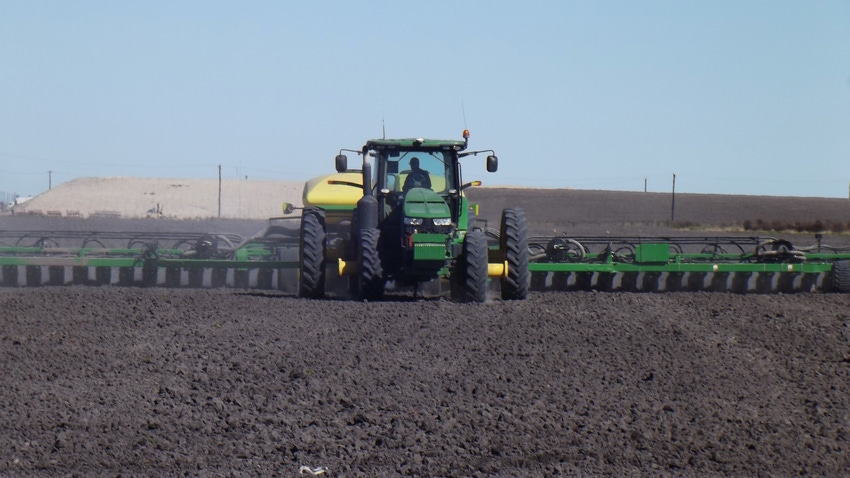December 27, 2016

Little doubt exists that the next 25 or so years will bring a slew of new developments, technological breakthroughs and probably more than a few surprises. From plans to colonize Mars to monumental discoveries and advancements in medicine, computing, communications, manufacturing and science, the future of innovation should be radical and bright.
An amplified and accelerated growth in technological and industrial invention spanning the last 20 to 25 years has prepared us to be optimistic for expectations of progress. From the think tanks to the drawing boards to the assembly lines, we realize many of yesterday's ideas have already found their way into the daily workplace. So why shouldn't we be optimistic for the future?
In agriculture, consider GPS-guided precision farming systems, advancements in biotechnology, new drip or subsurface irrigation systems, autonomous farm equipment, vertical farming systems, livestock tracking tools, unmanned aerial vehicles—just to name a few.
MORE COMING
And if you think the extreme advancements in agriculture technology of recent years are marvels of modern invention, scientists are telling us “just and wait and see what is coming.”
As we stand on the threshold of post-modern farming and ranching and the development of the next level of technology, science-based inventions may be the most promising area of next-generation progress that could change the way we grow our food and commodities—even the way we farm.
Take, for example, the projects being developed by Indigo, a company that analyzes the microbiomes of plants to produce seed coatings that will impart various positive attributes in the production cycle. Their very forward-thinking work involves a way to combat difficult conditions for several crops. These efforts are supported by $56 million in financing the company has acquired to support projects such as using bacteria found in coastal grasses to develop the next level of drought resistant crops.
DROUGHT RESISTANCE
According to a recent report published on the Tech Crunch Network, drought resistant plants are one of the highest priorities of Indigo.
"We’ve taken tens of thousands of plant samples [from] every continent except Antarctica—everything from extreme Northern latitudes down to the tropics. We take those, isolate the microbes, we grow them and sequence them. We now have over 40,000 microbial sequences," reports David Perry, CEO, and Director of Indigo.
The Company is committed to helping agriculture deal with drought and water shortages caused by a changing climate. While current research focuses specifically on West Coast agricultural, Perry says the company is striving to help additional areas across the globe that are suffering even worse from water shortages. Perry believes that if analyzed correctly, these microbes should be able to produce plants that are insect and pest-resistant.
The process would involve coating seeds, much the same way many seeds are already coated across the biotech industry. But as Indigo seeds sprout, they would incorporate microbes into an internal environment with the intended result being higher yielding crops.
"We’re increasingly (improving our) understanding (that) the characteristic of a plant is something to do with its genome and something to do with the genome of the microbes in it," Perry says.
Indigo officials say they are not pioneering work with microbiomes. They point to other startups, like uBiome, that has been working with analyzing human microbiomes with the intent of improving human health. Similarly, Indigo is analyzing and mapping plant microbiomes and their relationships with food production in an effort to develop better plants and ultimately better and more productive crops.
IDENTIFYING MICROBES
According to the Tech Crunch report, Indigo has been figuring out what kinds of microbes are present within plants, and then applying an algorithmic approach to determine which ones probably offer traits like drought-resistance. Already the company has tested plants with a seed coating based on that microbe profile in a lab, and also points to four years of successful field trials in both North and South America.
Indigo officials say their approach differs from other companies working with seed coatings for pest and weed control. Those products are designed to provide a positive pesticide and herbicide result, but by improving crop yield in their resistant seeds, they were unintentionally destroying the microbes in the plants. Indigo scientists want to identify those microbes and then add them back to the plants to see if they would impart traits to make them more hardy under difficult growing conditions.
Early results have been encouraging.
AG LEAST DIGITIZED INDUSTRY
The work at Indigo, however, represents only the tip of the iceberg when it comes to new technology for food production. According to another report, this one from a 2015 study from the McKinsey Global Institute, agriculture is the least digitized major industry in the United States. On the brighter side, that is changing quickly. In recent years, farmers have moved to smartphone technology for crop management, assisted by the development of data collection systems from drone and satellite technology.
In addition, new companies are providing updated technology to farmers, such as services that provide localized weather prediction; and companies like Blue River Technology has developed a smart box that can be attached to a tractor to scan crops and determine fertilizer and soil moisture needs.
Development of a new era of robotics is expected to affect farming in the near-future. While robots on the farm already exist in one form or another, better and lower-cost systems are being developed to help elevate farming operations into a more streamlined and digitized operation.
Farmers of the near future may do more data analysis than they do actual planting and harvesting from the seat of a tractor or harvester, but the result, say system designers, is a more efficient and hopefully a better yielding and more profitable farming operation.
Technology, say scientists, represents the only real future for agriculture.
You May Also Like




